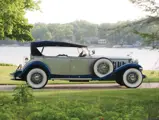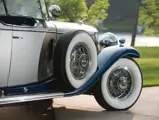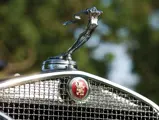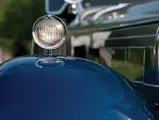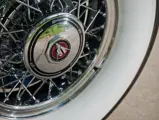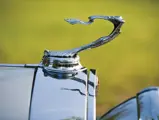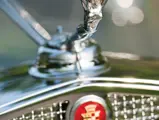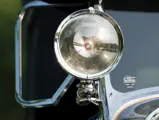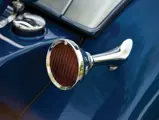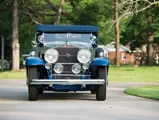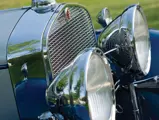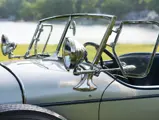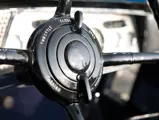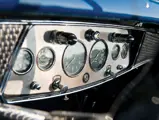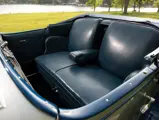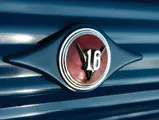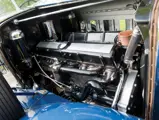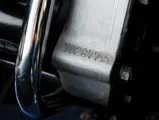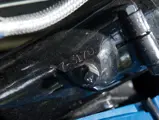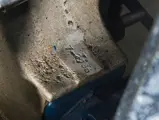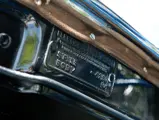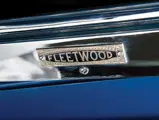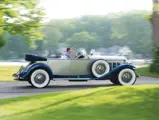
1930 Cadillac V-16 Sport Phaeton by Fleetwood
{{lr.item.text}}
$412,500 USD | Sold
{{bidding.lot.reserveStatusFormatted}}
- Offered from a well-known private collection
- An original V-16 Sport Phaeton and one of eighty-five built
- Displayed at numerous concours d’elegance
- Numerous desirable options and accessories
Style 4260. 185 bhp, 452 cu. in. OHV V-16 engine, three-speed manual transmission, front and rear semi-elliptic leaf springs with hydraulic dampers, and four-wheel vacuum-assisted mechanical brakes. Wheelbase: 148 in.
On January 4, 1930, Cadillac stunned the fine car market at the New York Auto Show with the introduction of its breathtaking new V-16. With it, Cadillac instantly catapulted itself to the head of the luxury class in one brilliant stroke. Until then, only Bugatti had produced a 16-cylinder engine, which was accomplished by bolting two eight-cylinder inline engines together—an innovation that was originally intended for aircraft use.
Cadillac’s V-16 was the first true 16-cylinder engine to be built from scratch. This was a project that was led by Owen Milton Nacker, and it was under conditions of the utmost secrecy. In order to avoid knowledge of the project leaking from lower-level GM engineering departments and parts suppliers, a well-coordinated disinformation campaign that included cover stories and notes on various blueprints was created to imply that the project was actually Cadillac’s contribution to a new GM bus project.
The 45-degree cylinder bank angle and overhead-valve design kept the V-16 narrow, while its external manifolds allowed easy access to the engine compartment. Furthermore, Cadillac’s V-16 was the first automotive engine ever to be “styled”: the wiring was hidden, the engine compartment was dressed up with plenty of gleaming, polished aluminum and porcelain, and it had a pair of beautiful valve covers with brushed aluminum ridged surfaces that featured the Cadillac emblem.
Cadillac managed to survive the rapidly declining luxury car market of the early 1930s thanks to the financial resources of GM, its massive parent company. Without this support, Cadillac could never have produced such a limited-production, luxurious automobile. Although the V-16 was brilliantly designed, the Depression-era market meant that it was, of course, produced in tiny numbers and for those few who were capable of paying more than 10 times the cost of a contemporary Chevrolet convertible.
One of the most beautiful body styles fitted to the early V-16 chassis was the sport phaeton. It was inspired by Gordon Buehrig’s striking tourster design for Duesenberg, and it was a modern update of the traditional “dual cowl” phaeton, which provided a windshield cowl and a windshield for the rear-seat passengers. While other examples of this style featured a hinged cowl that lifted up to allow passengers in and out, the sport phaeton’s innovation was a windshield mounted directly in the back of the front seat. It could be raised and lowered in and out of the seat by turning a small crank, giving the car an unusually light and delicate appearance of line, which was reminiscent of nothing less than a four-passenger roadster. Typical of the designs for this chassis, it had outstanding performance thanks to the long hood and low beltline, and it looked spectacular with the top either up or down.
Only 85 sport phaetons were produced for the V-16 chassis in 1930 and 1931 combined. Survivors are extraordinarily rare and are considered by many to be the most attractive factory coachwork for this historic automobile.
The car offered here, chassis number 702877, is documented by its Cadillac build sheet, a copy of which is on file. It notes the car as being a phaeton, with job number 4260, which was the style number of the sport phaeton, and body number 94. According to V-16 historian Christopher Cummings, it was shipped on December 24, 1930, to New York City, only to be returned to the factory in February 1931. On September 28, 1931, it was sent on to Philadelphia. “Many of these cars moved around a bit before they found homes,” Cummings notes. “During the first half of 1930, they were selling like hotcakes, and then people began to be aware of the severity of the financial mess. This car’s engine number is ten before the end of 1930 production (702887 is generally considered to be the cut-off), so it’s not surprising there was a diversion.”
This car was owned in the 1980s by well-known Classic Car Club of America member Walt Dietzel, and it was then acquired by its current owners over a decade ago. It had required extensive restoration, which was completed to an excellent standard, and the car was returned to its original appearance, just as when it had first been delivered. It was refinished in a distinctive livery of metallic silver and bright blue, with a complementary blue interior. Numerous correct options and accessories found on the car include chromed hood louvers, chrome wire wheels shod in whitewall tires, dual side-mounted spares, dual Pilot Ray driving lights, fender marking lights, dual cowl-mounted spotlights, wind wings, a radiator stone guard, and Cadillac’s iconic goddess mascot. As this car has been well maintained since its restoration, it still shows exceptionally well, and it has even been shown at the Meadowbrook Concours d’Elegance, among other events. It would be welcomed in various Cadillac-LaSalle Club and Classic Car Club of America events, including participation in Grand Classics and CARavans.
Original examples of the beautiful V-16 Sport Phaeton are seldom ever offered. This car, which is documented by its build sheet, has benefited from long-term care by loving owners, and it will continue to be a star in any collection it graces. It embodies a grand era in automotive history.
Please note that this lot is titled as a 1931.


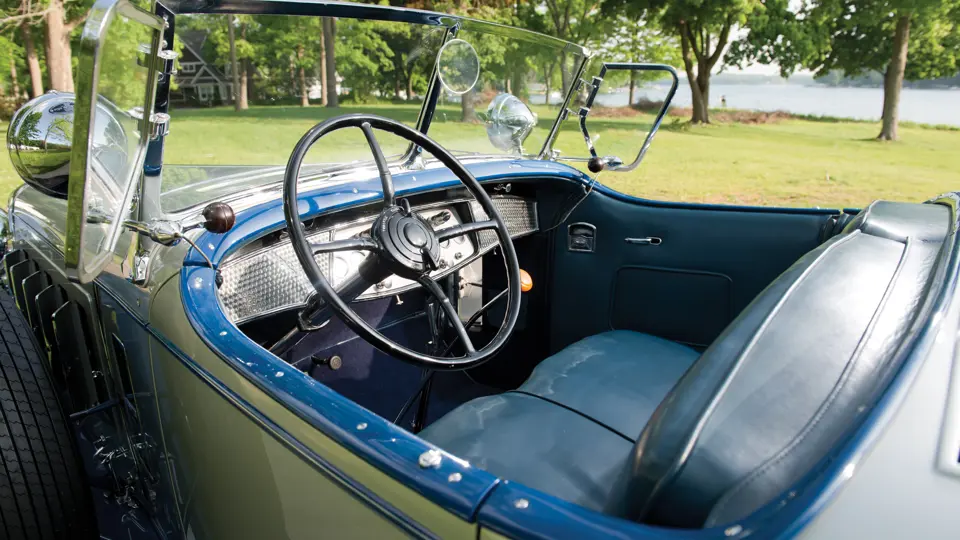


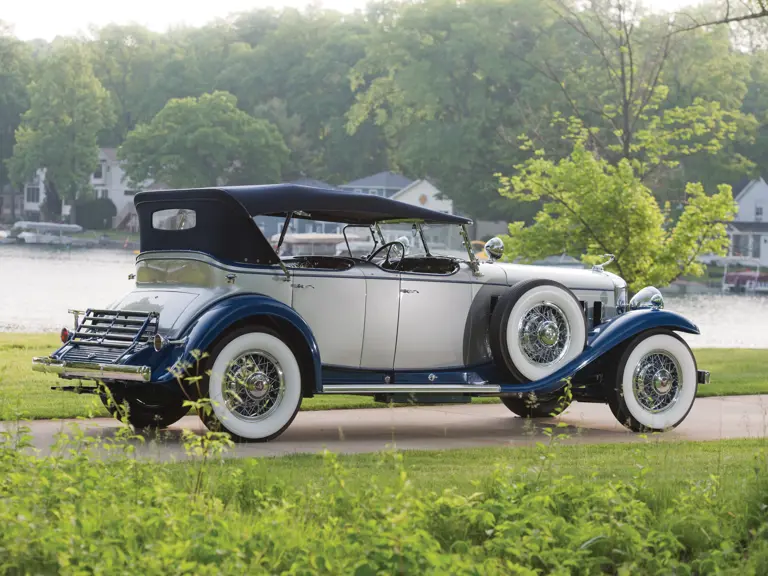

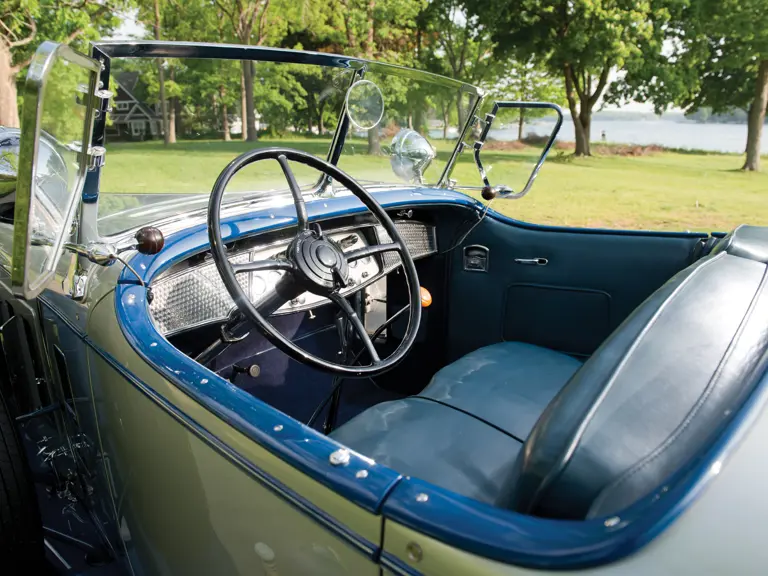






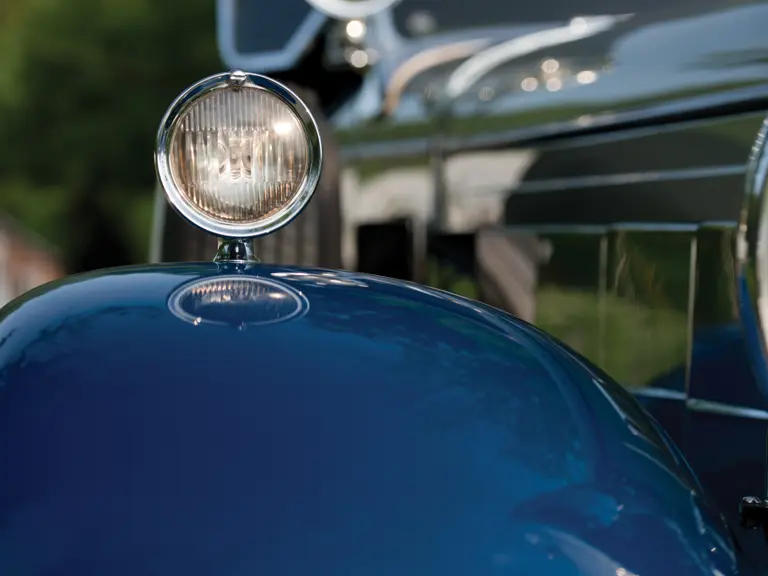
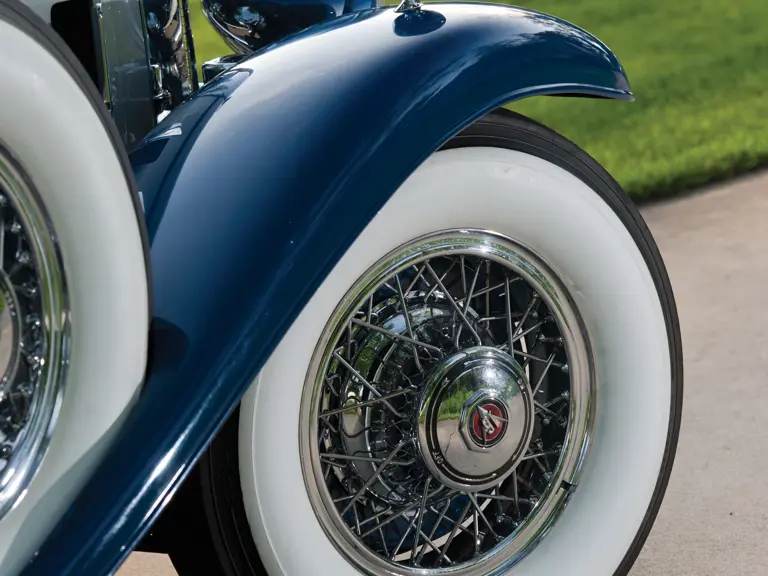
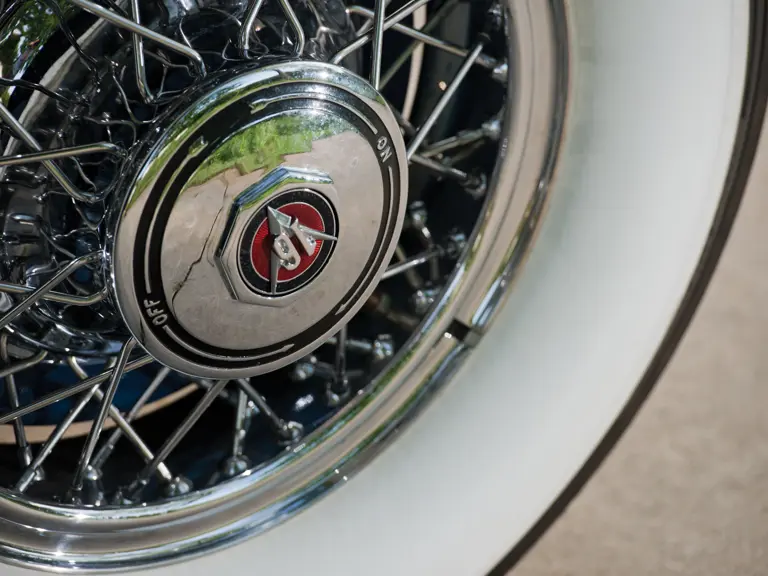
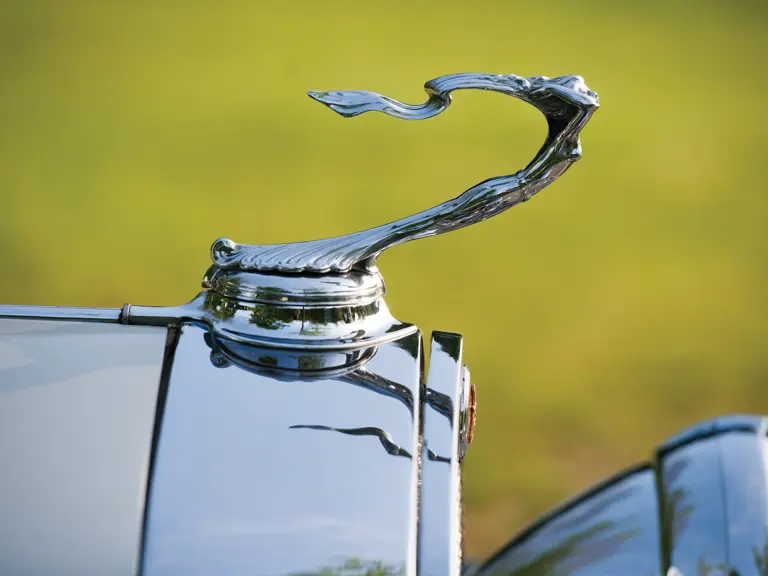
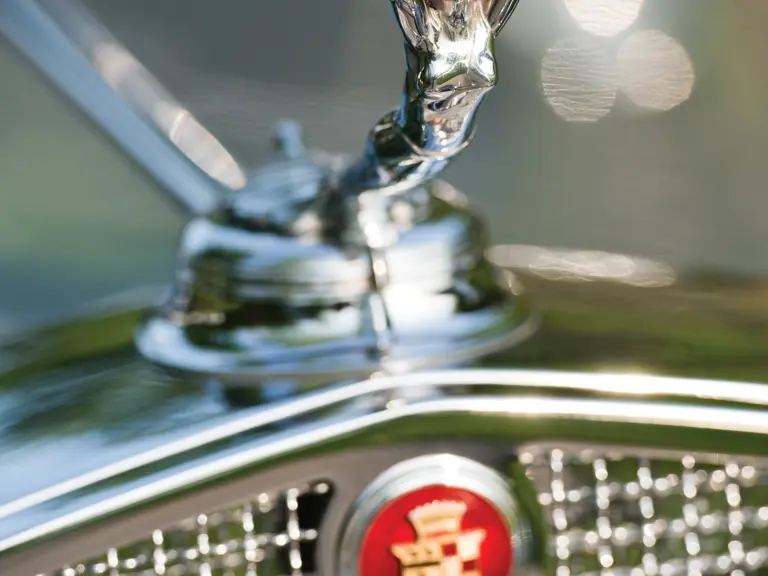


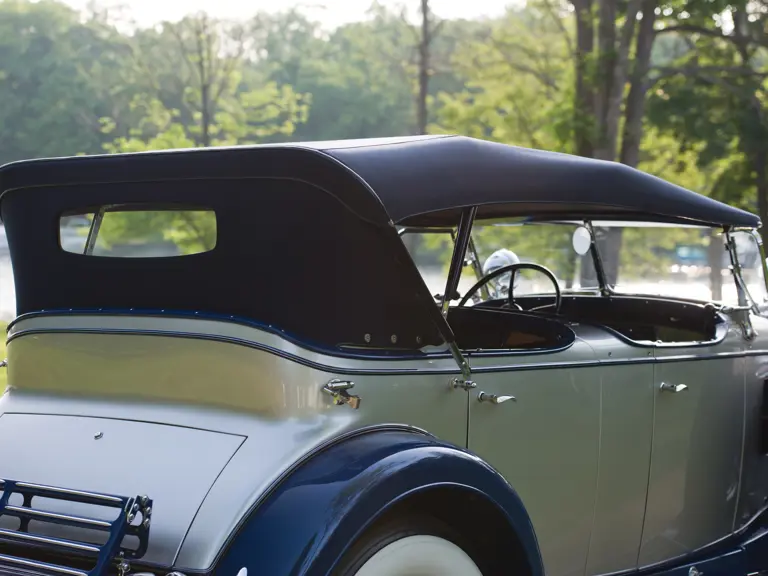

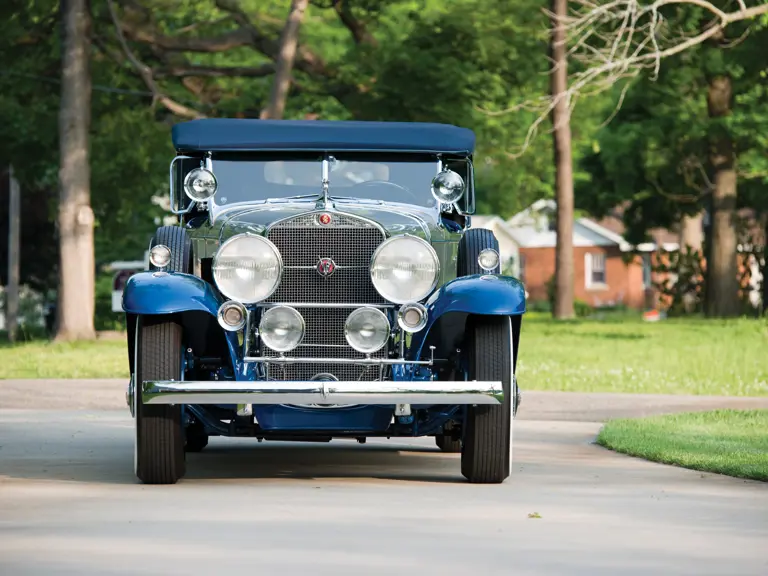
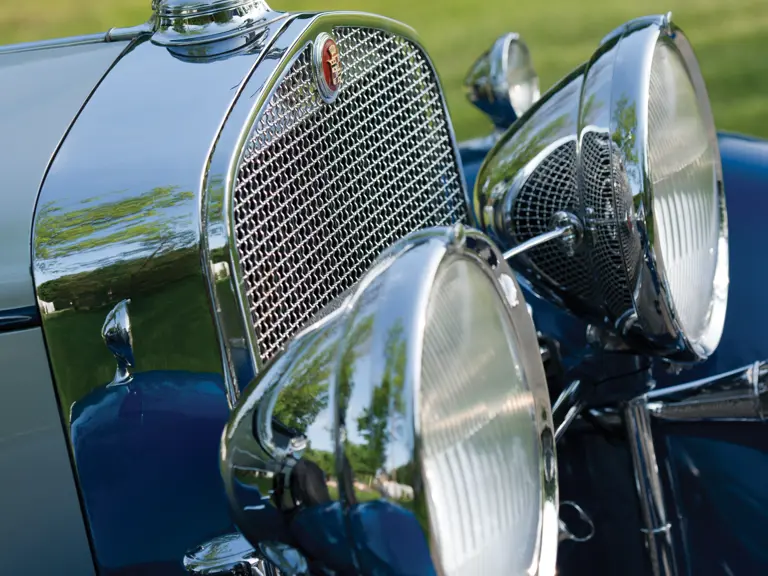
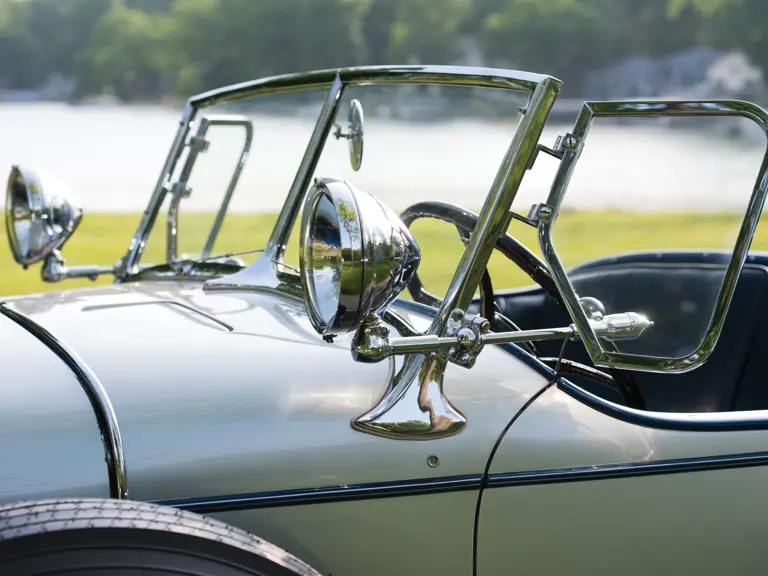
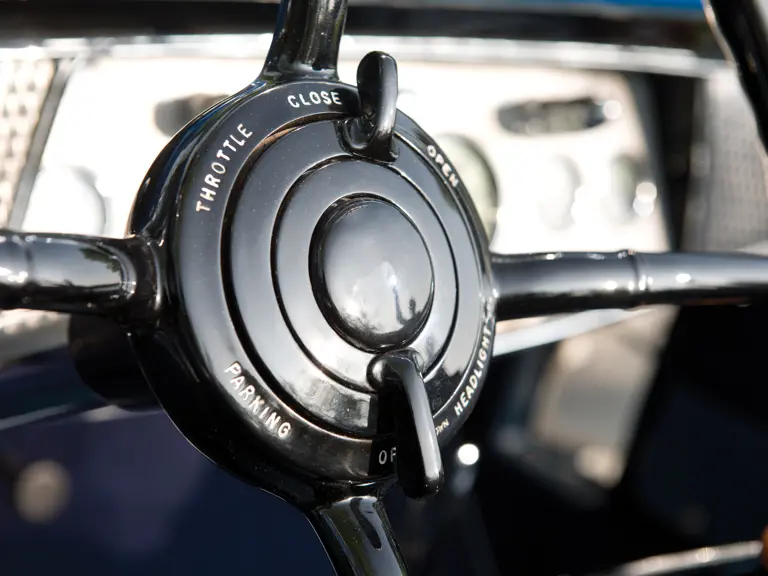


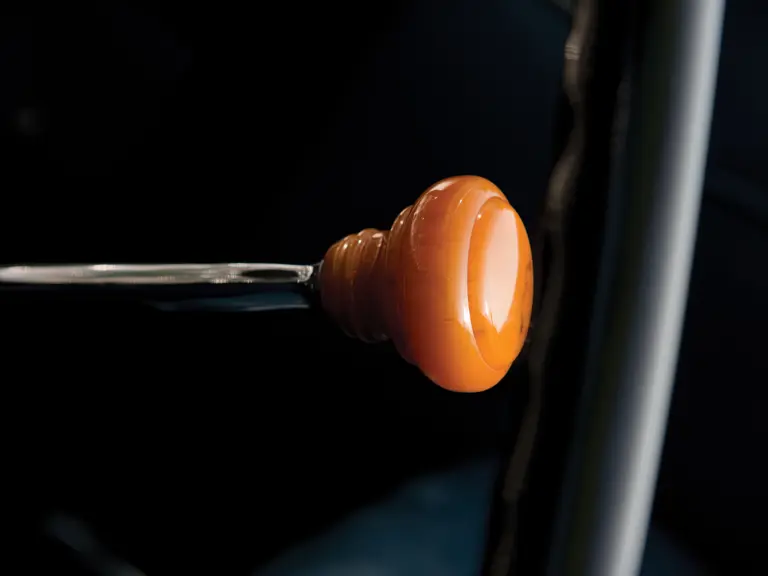
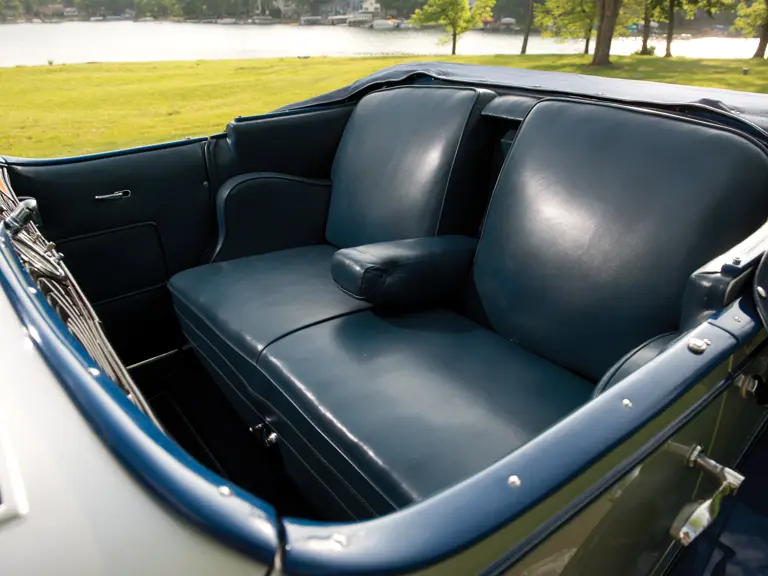

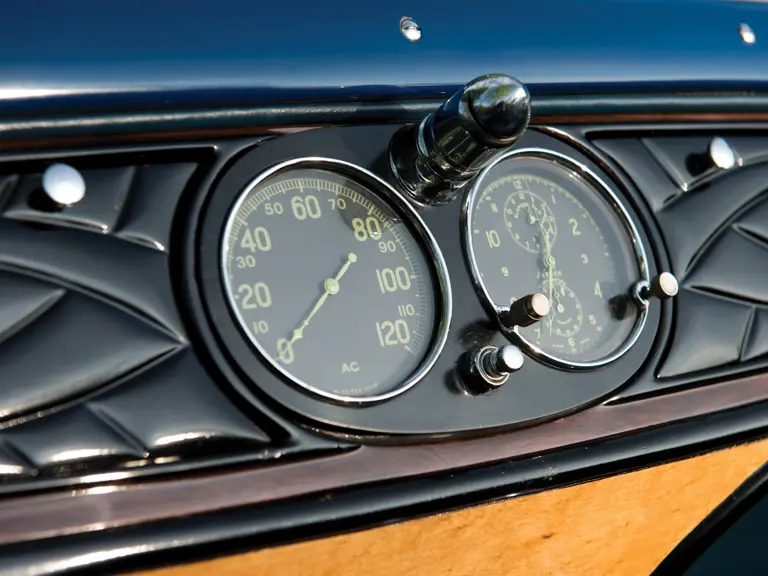

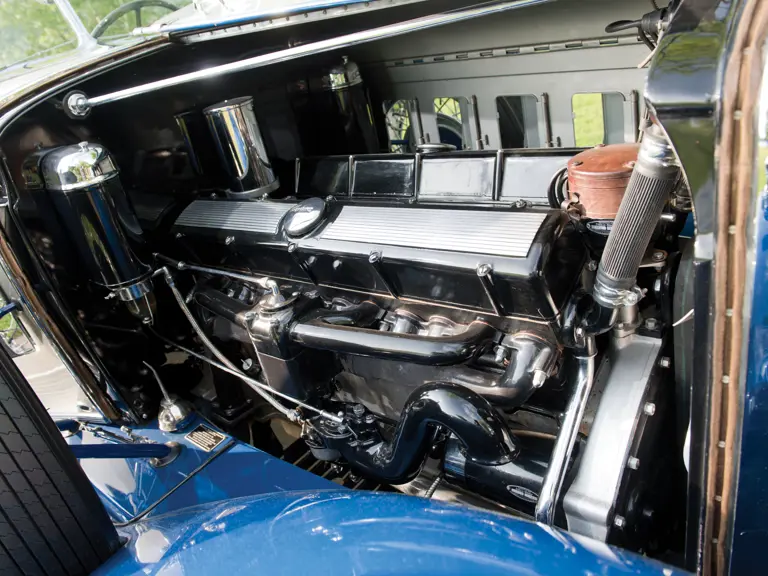

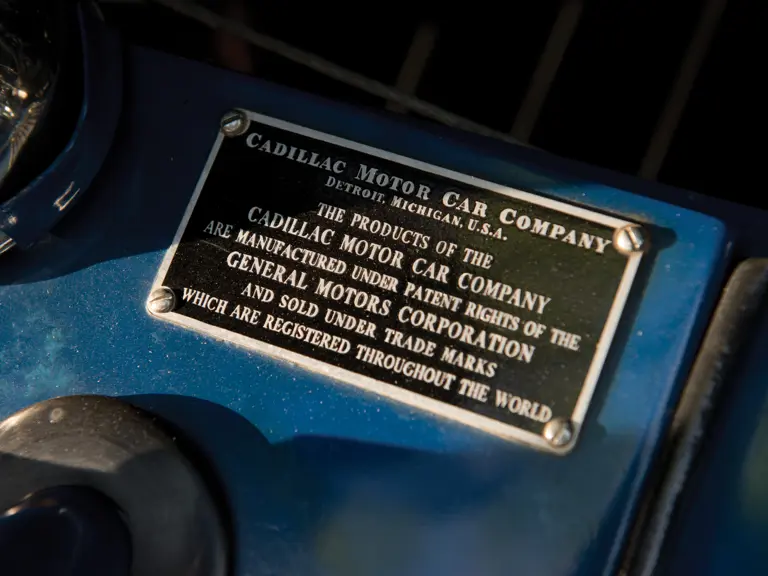
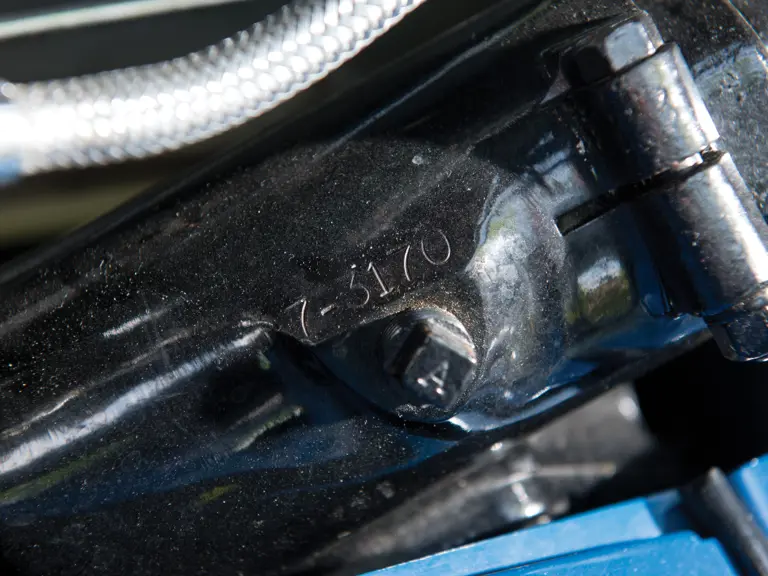



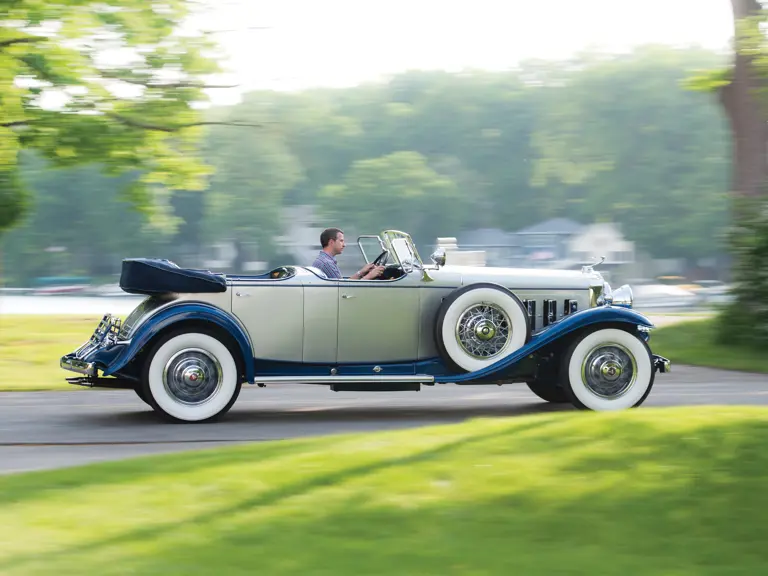
 | Hershey, Pennsylvania
| Hershey, Pennsylvania



